NatureZen: Dog Day Symphony
NatureZen: Dog Day Symphony
words and photos by Melissa McMasters, except where noted
There’s no sound that takes me back to childhood quite like a cicada song.
As daylight waned on a summer evening, my grandma would finally deem it cool enough to get into her above-ground pool, where she would side-stroke around the circumference as I chattered happily at her. When I hear the wee-oo-wee-oo-wee of a twilight cicada chorus, I can almost go back there: I smell the mint growing wildly in the backyard flowerbed, see my grandma’s hairdo tucked tightly into a shower cap, feel the chlorine sting my throat as I scream and dunk my head at the approach of an unwelcome horsefly.
I’m willing to bet many of you reading this have strong memories of that sound too. And if you’re like me, you may also remember shuddering as a kid when you found the abandoned exoskeleton of a newly-emerged cicada on the side of your home.
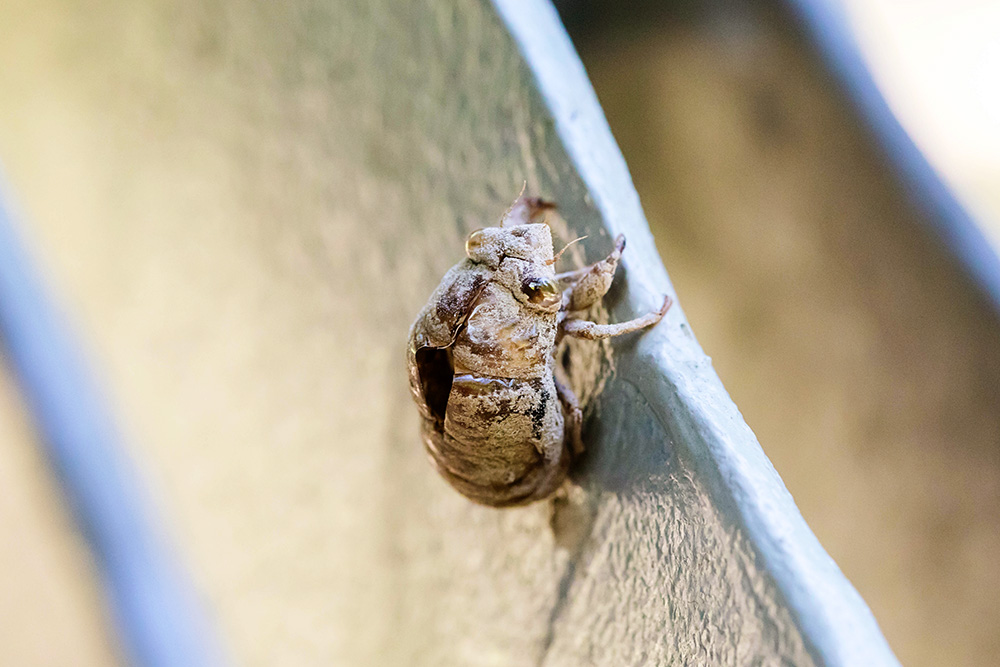
What’s going on here anyway? These husks get left behind when the cicada nymph emerges from underground, where it’s been feeding on root matter. Ready to become an adult, it crawls up onto a surface, pushes out of its exoskeleton, and starts to inflate its wings. Cicadas will stay at this perch for an hour or two, letting their new exoskeletons and wings harden. I’ve never gotten to watch this process in action, but beloved Conservancy alum Fields Falcone graciously allowed me to share photos from a time when she witnessed a cicada emergence.
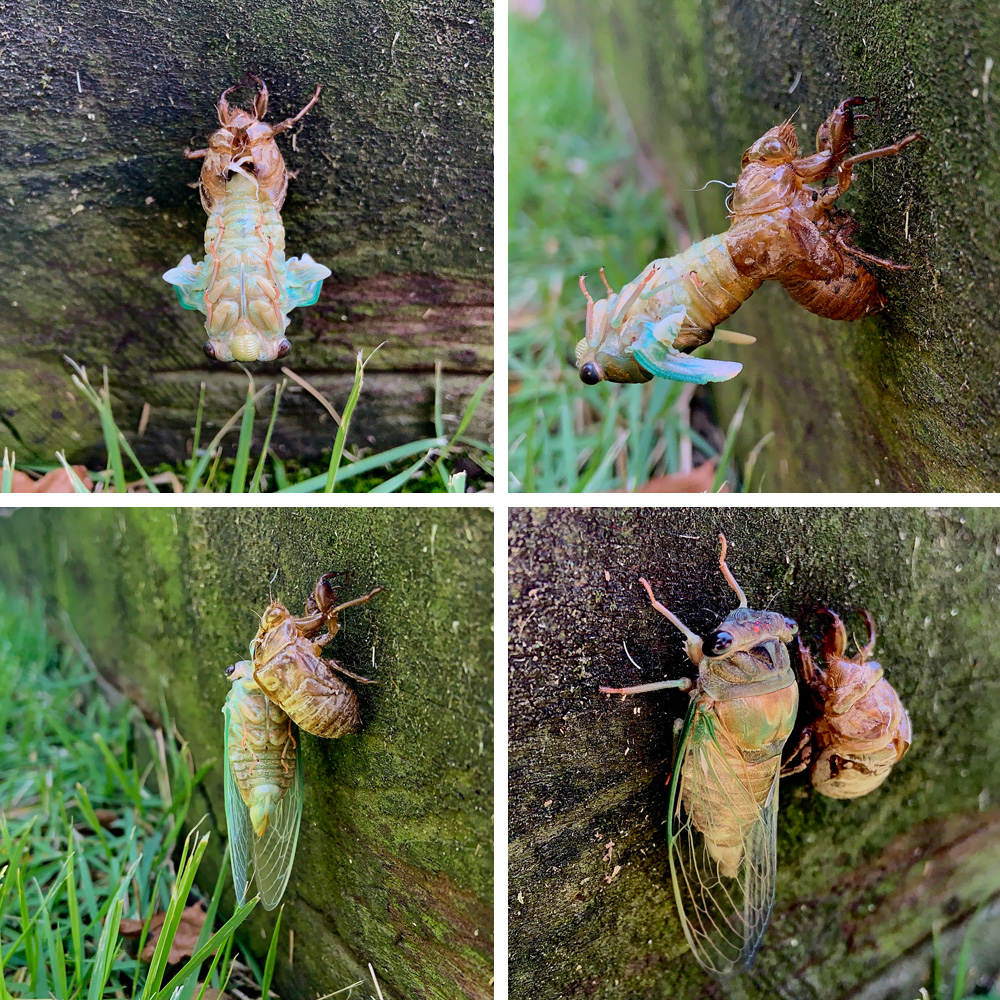
So what do the cicadas do once they’ve emerged from their shells? They eat (using their long mouthparts to pierce and suck the liquid from plants) and search for mates. This part is why our summers are filled with cicada songs: the males are singing to attract mates. Different species sing at different times of the day. If you’re out in the morning, you’re likely hearing the pulsating tune of a swamp cicada, which stops singing in the afternoon. (Hear the song here.) Males make their roughly 100-decibel noises by vibrating organs called tymbals, and their hollow abdomens help magnify the sound. Unlike crickets, which rub together organs on their wings to “sing,” cicadas are shaking their tymbals like tambourines.
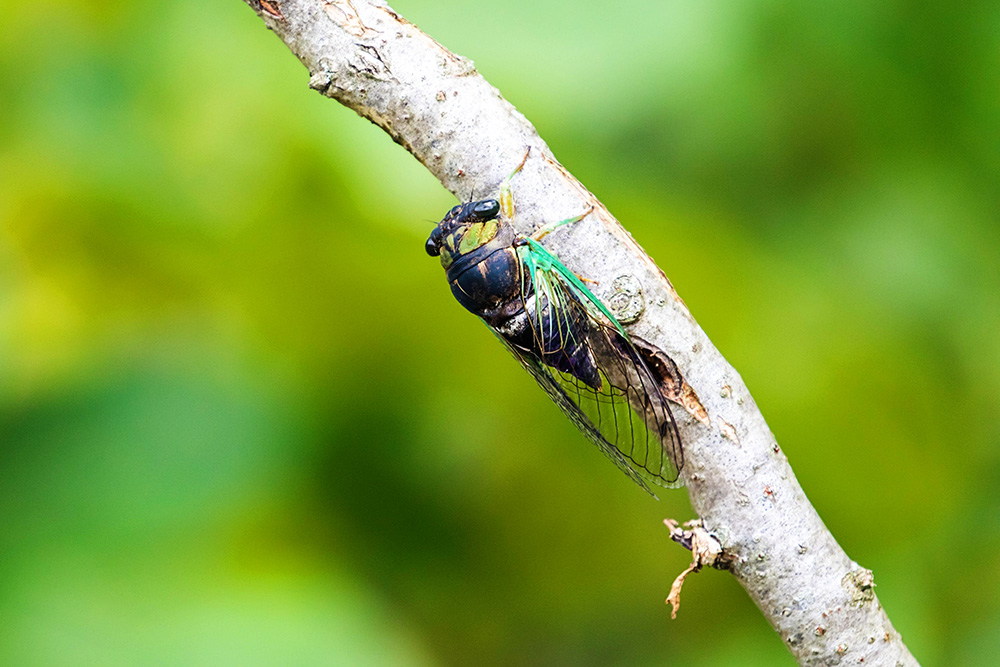
The cicada whose song I remember from evenings in the pool is the scissor grinder, which is named for the sound it makes. Having never tried grinding scissors together, I’m not sure if that’s accurate, but you can judge for yourself. This one sings from daytime into the evening.
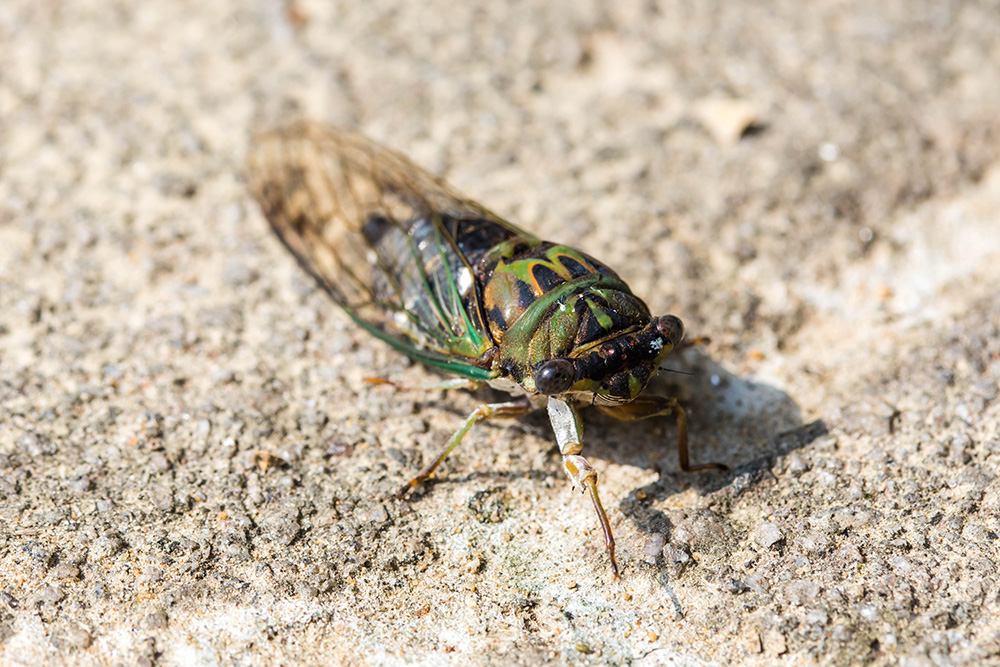
At the end of the day, mixed in with the scissor grinder, is the song of the Northern dusk-singing cicada. (Listen here.) Its dramatic increase in frequency has become such a feature of twilight falling that I sometimes fail to notice it unless I’m really paying attention. This species sings from high in the trees, so I rarely spot one, but this one was nice enough to visit my tire one evening.
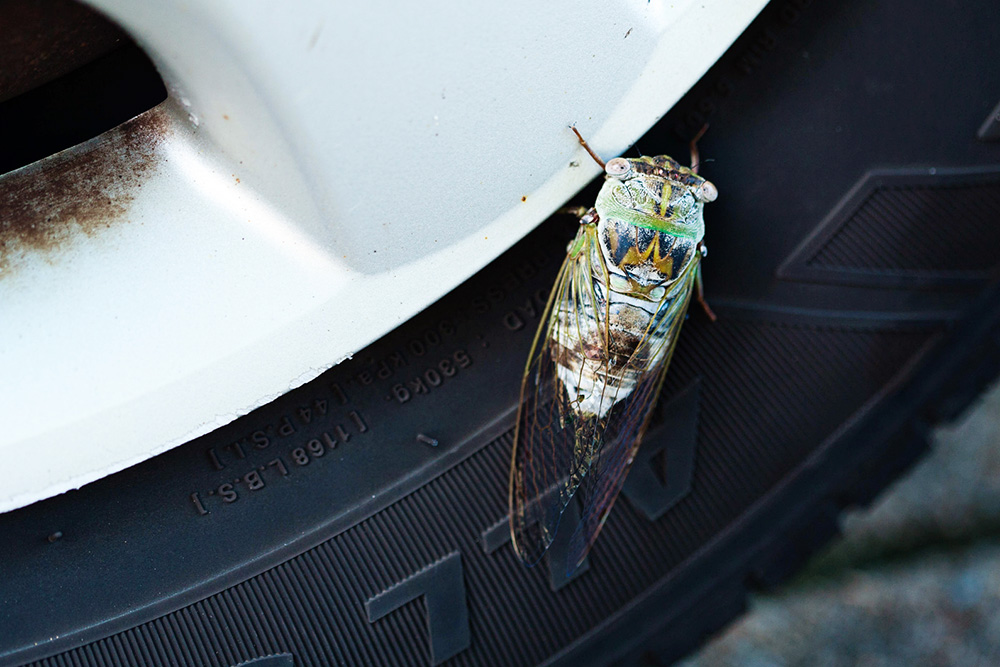
A few weeks ago, I was able to see a male swamp cicada’s overtures meet with success. He was singing on a tree limb when a female flew in and perched just above him. He approached her gingerly and then effectively started spooning with her.
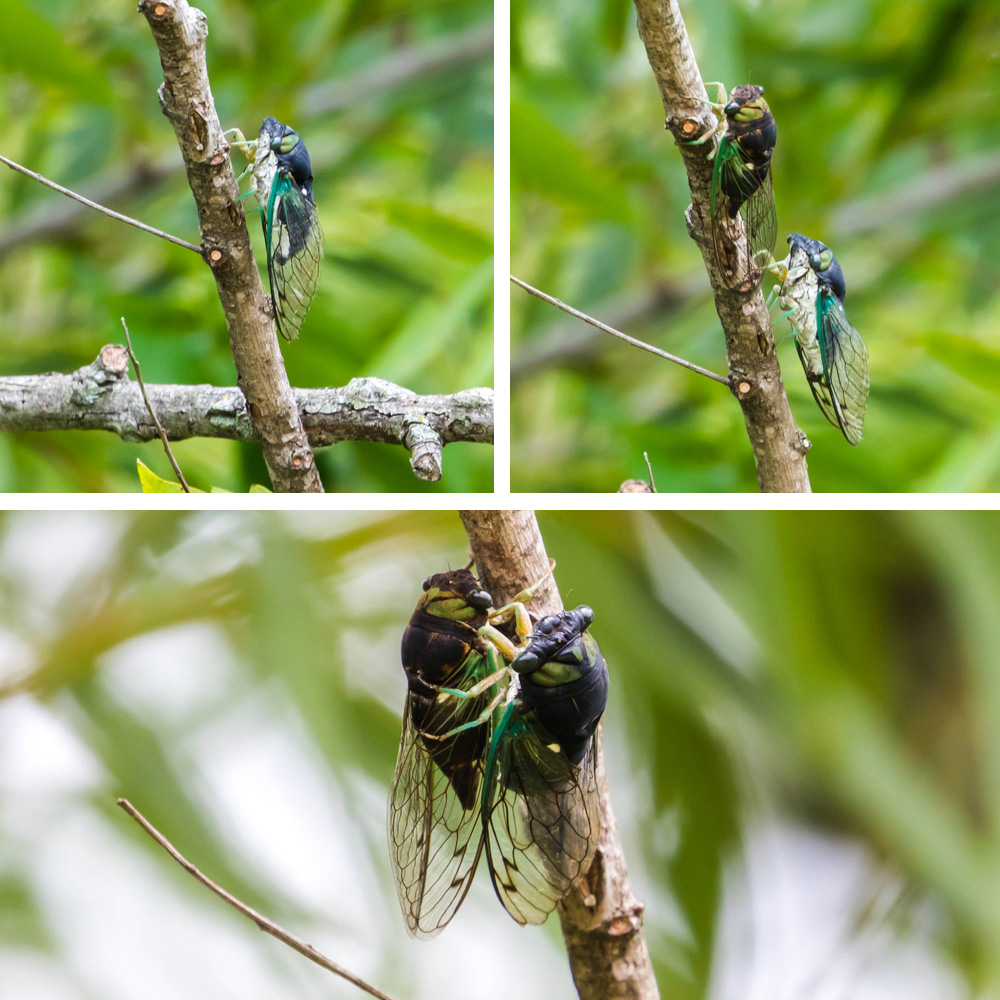
(I didn’t see the dirty deed take place, though, because I was dive-bombed by a barn swallow and had to vacate the area. She wasn’t bothered by my photographing her snoozy children at first, because I was keeping a respectful distance, but I stepped closer to the tree line when the female cicada flew in. Even though I wasn’t actually closer to the baby birds, she took that as an act of aggression, went straight for my head, and by the time I had run off and turned to look back, she’d marshaled about two dozen other swallows in her campaign of intimidation! Respect, Mama.)
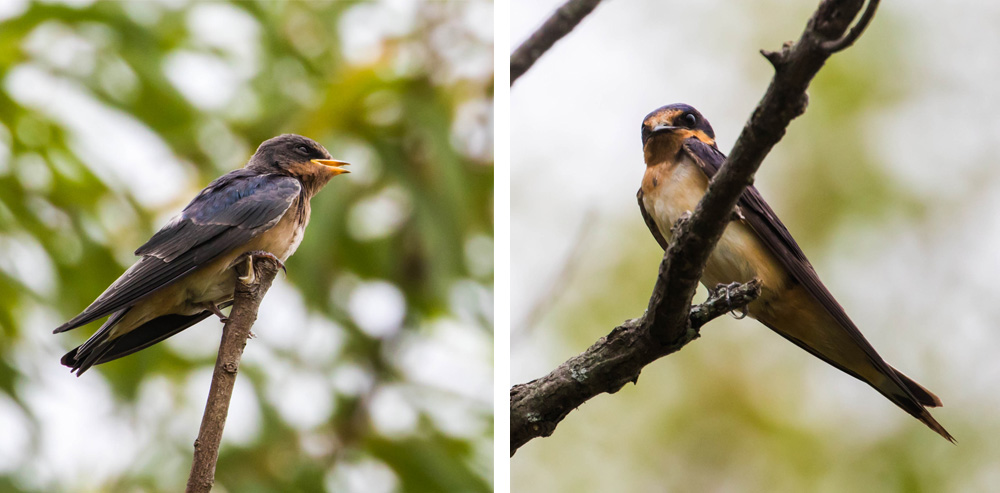
The cicadas I’ve shown you so far are the most common in our area according to iNaturalist, but they’re not the ones that attract the lion’s share of attention every few years. The cicadas above are annual cicadas, also known as dog-day cicadas because they emerge in July and August every year. They’re dark green and black with green wing veins, and their larvae live underground for two years before emerging as adults. Though there are over 3,000 species of them worldwide, they are generally not present in large enough numbers to do much damage to the plants they feed on.
But what about those massive broods that come out every 13 or 17 years? Those periodical cicadas represent just seven species (in the gloriously named genus Magicicada), but they cause a whole lot of frenzy whenever they arrive. Rather than spending two years underground, their nymphs are submerged for either 13 or 17 years and come out en masse in the springtime. (Mostly these huge broods don’t overlap geographically, but I found myself on a family vacation in Lake of the Ozarks, Missouri in May 1998 when a 13-year and a 17-year brood happened to coincide and frisky flying bugs were everywhere. I have never seen such carnage on a mini-golf course.)
West Tennessee’s last brood of periodical cicadas, which sport a sleek black-and-red color scheme, was back in 2015. I remember walking along the Mineral Slough Trail in Lagrange, TN and wondering what sort of sheet-metal work was happening in such a normally-quiet area. Eventually I looked up and saw that virtually every tree branch was covered in Riley’s 13-year cicadas. Their noise is…unpleasant! Brood XXIII will be back in five years, so get those earplugs ready! (Here’s a map of where the different broods occur and when.)
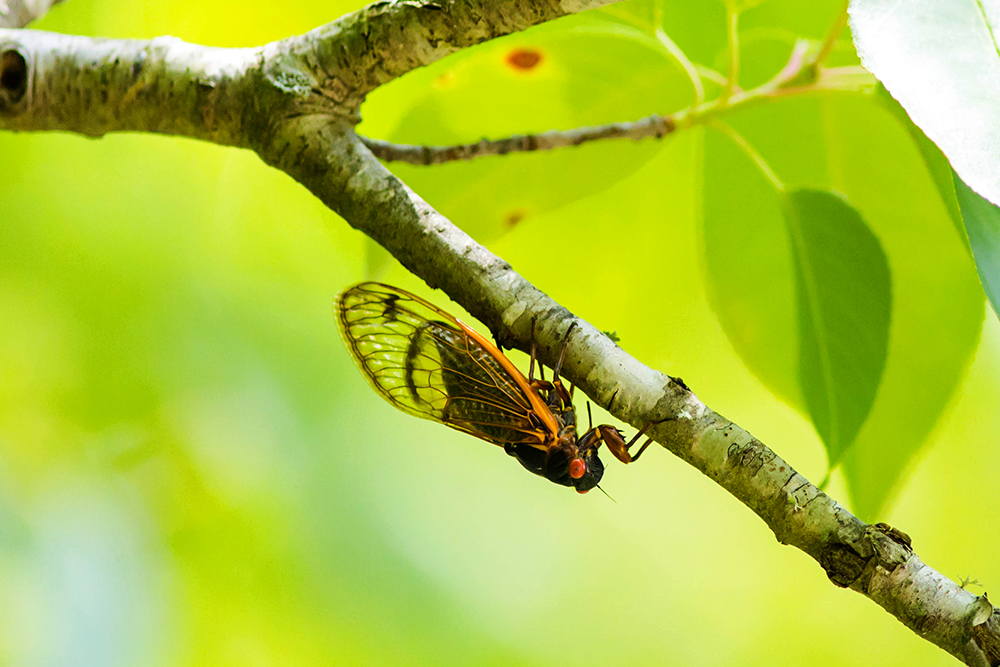
For the next few weeks, I plan to enjoy the comforting drone of our local dog-day cicadas until it’s time for them to go silent for another 10 months. I hope you’re able to spot some of these fascinating creatures before they’re gone!



